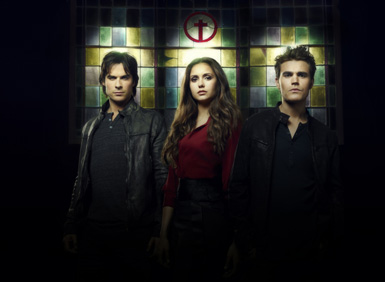
Back in the day, the vampire was a creature to be feared: a monster preying on mortals under the cover of darkness, a creature draining the living of their blood and maculating them, turning them into vampires. Over time, in turn, vampires have been transformed into something different: they were no longer the bloodthirsty beasts to be feared but have become something much more romantic – and their feeding on human blood has turned from an act of violation into something almost sensual. Just take a look at some of the most famous vampire-related movies and TV shows released since the 1990s – Francis Ford Coppola’s “Dracula”, Neil Jordan’s “Interview with a Vampire”, the “Twilight” saga or even the long-running “The Vampire Diaries” or its spinoff “The Originals”, ending its five-year run last year. But things are changing. Ian Somerhalder’s return to vampire country (he played the antihero Damon Salvatore in “The Vampire Diaries”) will be a bit different than you expect.
In “Van Helsing”, the SyFy’s dark fantasy series recently renewed for a fourth season, the vampires have lost their romantic side. Their condition is presented a lot like an infection (a lot like the emergence of zombies is caused by a virus). Most of them are depicted as mindless monsters that are driven by nothing but their craving for blood (just like the zombies are often depicted as mindless monsters craving for flesh, perhaps brains). In Somerhalder’s new series called “V-Wars”, based on an anthology written by Jonathan Maberry. While the series’ monsters are usually referred to as “vampires”, even though the more detailed description makes it clear that they are “predators that feed on humans” (it fits the definition, but still…). And the best example for the de-romanticization of vampires is Guillermo del Toro’s series “The Strain” in which many of the above stories are mixed-up: we have the beings feeding on human blood that are ancient and wise… but they are parasitic monstrosities that take over a human host entirely, granting them immortality but transforming them in grotesque creatures. These “strigoi” spread through a vector that has both the features of a parasite and a pathogen, changing the genome of the human host. And in this series, the vampires lose their fangs – they suck the blood of their victims using a six-feet-long retractable mouthpart (a proboscis) that turns their feeding into a grotesque and repulsive process.
Vampires have come a long way from Count Orlok in Nosferatu and Bela Lugosi’s archetypical Dracula. They slowly turned into the objects of desire for a generation – and now they are once again transforming. Not into a swarm of bats but into blood-sucking beasts that spread their condition like a disease.




